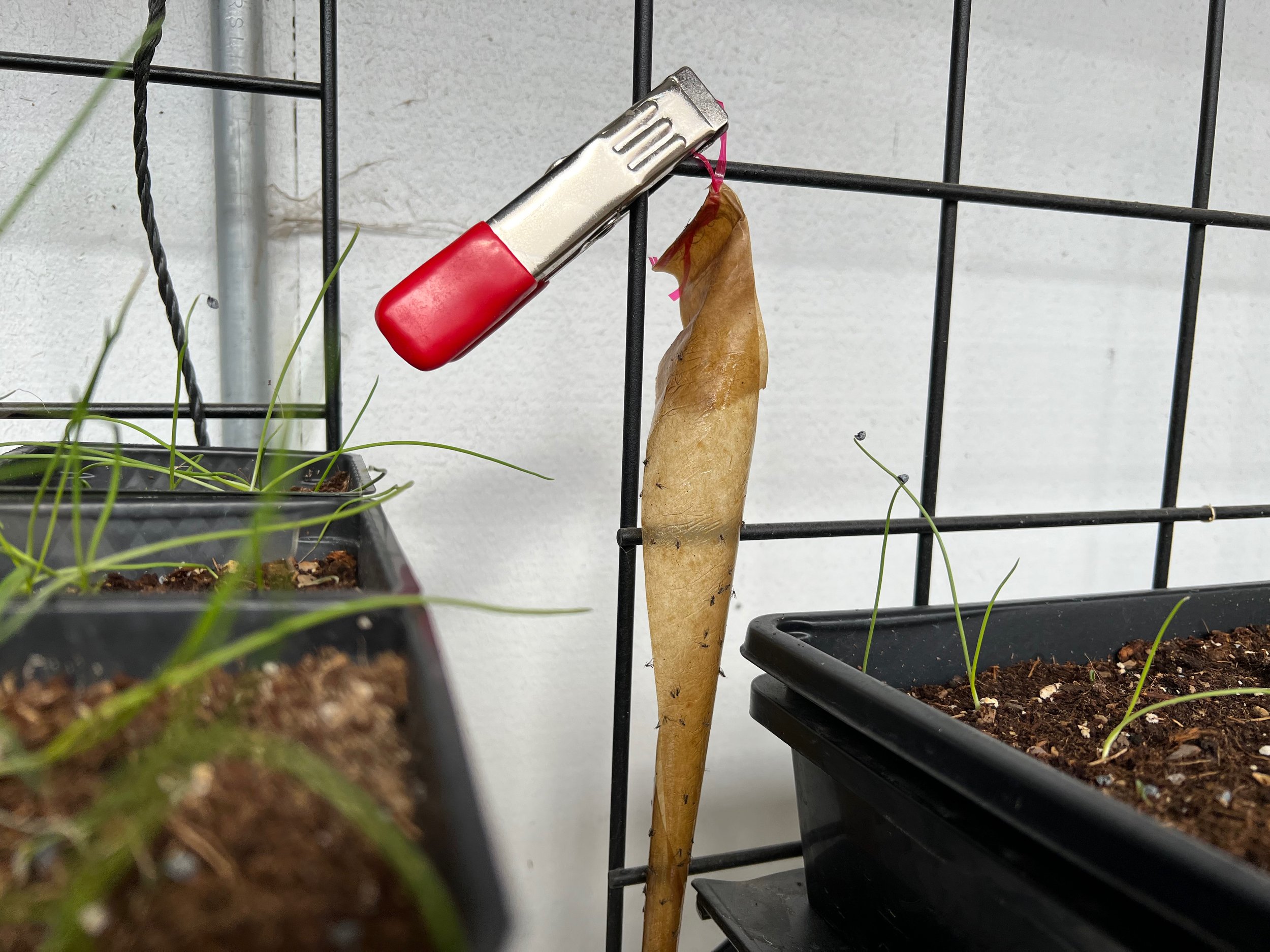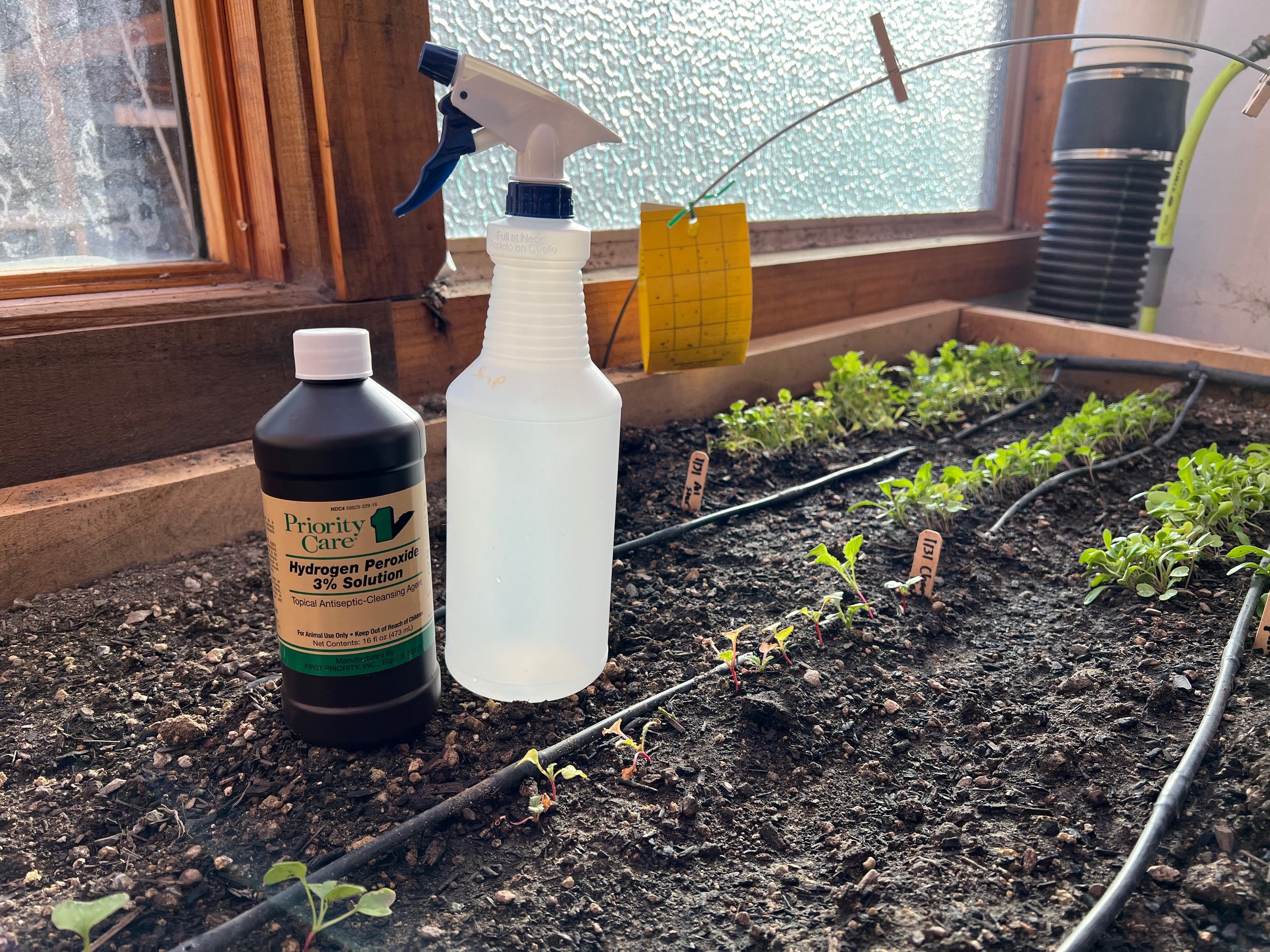What are these mosquito looking gnats flying around my plants?
They are likely fungus gnats, which breed on the surface of super moist soil. Fungus gnats are most common in indoor growing environments (like in your greenhouse or seed starting space in your house). They can also get into your space from infested plant material from a garden center or from moist seedling mix or potting mix.
The good news is that the adults don’t typically harm your plants, but are just really annoying. However, they can carry fungal diseases and their larvae can drain plant roots of their nutrients. We have been fortunate to avoid fungus gnat infestations by practicing good pest and disease prevention, like:
using oscillating fans to promote good air circulation in our greenhouse space
avoiding overwatering! In general, we keep the top of our soil consistently moist while we wait for our seeds to germinate, but then, once our seeds sprout, we let the top of our soil dry out completely in between waterings. Not only does excess water create a dangerous possibility of root-rot for plants, but it also maintains the perfect conditions for fungus gnat eggs.
Yet, despite our prevention efforts, we recently noticed some signs of fungus gnats. Not only did we catch lots of adult gnats by hanging up some general fly traps, but our healthy radish seedlings mysteriously starting thinning out on their own and yellowing within just a few days. It’s normal for the those cotyledons (the heart shaped leaves you see here to yellow and fall off like baby teeth do), but the new leaves were also yellowing.
At this point we put up some more aggressive yellow sticky traps to knock down the adult population so they couldn’t lay more eggs. Then, we used materials we already had on hand, that, according to many, many sources on the world wide web, is a safe and effective intervention. We mixed 1 part hydrogen peroxide with 4 parts water and sprayed our soil with it to kill fungus gnat larvae on contact. It has been a week and, even though we can’t find any official recommendations for this method of control from OSU Extension or any other Extension publications for that matter, so far, so good. We aren’t noticing any new damage or plant loss and our plants seem to be growing at a faster rate than they were before.
If we do observe a new generation of fungus gnats, though, we will definitely implement the research based organic methods of control that we have recommended to gardeners with this issue before (do as we say, not what we do, right?!) like:
Applying Mosquito bits, which contain Bacillus thuringiensis v. israelensis (Bti) to kill fungus gnat larvae before they mature into breeding adults, and is evidently harmless to other beneficial insects. You can find these at most local garden centers.
Applying beneficial nematodes (but wait a couple weeks since we just applied hydrogen peroxide).
We hope you don’t encounter any fungus gnats in your spring seed starting adventures, but if you do, we hope sharing our recent experience is helpful for you! Next up: aphids…






